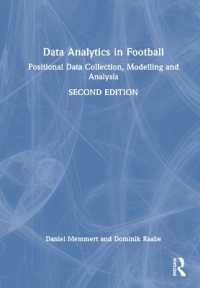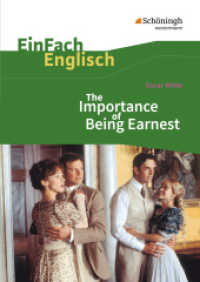Full Description
This volume outlines some of the developments in practical and theoretical research into speechreading lipreading that have taken place since the publication of the original "Hearing by Eye". It comprises 15 chapters by international researchers in psychology, psycholinguistics, experimental and clinical speech science, and computer engineering. It answers theoretical questions what are the mechanisms by which heard and seen speech combine? and practical ones what makes a good speechreader? Can machines be programmed to recognize seen and seen-and-heard speech?. The book is written in a non-technical way and starts to articulate a behaviourally-based but cross-disciplinary programme of research in understanding how natural language can be delivered by different modalities.
Contents
Part 1 Audiovisual speech processing - implications for theories of speech perception: the use of auditory and visual information during phonetic processing - implications for theories of speech perception, K.P. Green; language specificity in the development of auditory-visual speech perception, D. Burnham; time varying information for visual speech perception, L.D. Rosenblum, H.M. Saldana. Part 2 Engineering models of visible and audiovisual speech: ten years after Summerfield - a taxonomy of models for audiovisual fusion in speech perception, J.-L. Schwartz et al; computational aspects of visual speech - machines that can speechread and simualte talking faces, M. Brooke; the moving face during speech Communication, K.G. Munhall, E. Vatikiotis-Bateson. Part 3 Psychological and neuropsychological factors in speechreading: conceptual constraints in sentence-based lipreading in the hearing-impaired, J. Roennberg et al; effects of facial image size on visual and audiovisual speech recognition, T.R. Jordan, P.C. Sergeant; how brains see speech - the cortical localization of speechreading in hearing people, R. Campbell; impaired speechreading and auditory-visual speech integration in prosopagnosia, B. de Gelder et al. Part 4 Deafness, language and speechreading - speech-based approaches: what makes a good speechreader? - first you have to find one, L. Bernstein et al; early lipreading ability and speech and language development of hearing-impaired pre-schoolers, B. Dodd et al. Part 5 Deafness, language and speechreading - sign and augmentation: mouth movement and signed communication, M. Marschark et al; touch and auditory-visual speech perception, M. Oerlemans, P. Blamey; effect of exposure to phonetically augmented lipspeech in the prelingual deaf, J. Leybaert et al.







